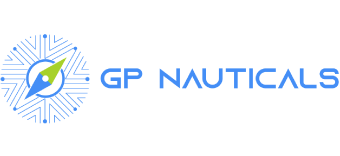Decarbonization: How Flexible Ship Design Drives the Future of Maritime Transport
The maritime industry is steering toward a net-zero emissions future, driven by the International Maritime Organization’s (IMO) commitment to achieving carbon neutrality by 2050. But reaching that goal isn’t just about switching fuels. According to DNV’s report “Maritime Safety: Trends 2014–2024,” the real key lies in safe and flexible ship design—alongside well-trained crews prepared to handle the challenges of this transition.
This historic shift also presents an opportunity to rethink safety and efficiency across the industry, blending advanced technology, training, and long-term vision.
Steps Toward Decarbonization and the Future of Maritime Transport
1. Alternative Fuels: New Risks, New Solutions
Even more shipowners are ordering LNG- or methanol-powered vessels, responding to tighter regulations and short-term carbon reduction goals. However, as DNV notes, the transition to alternative fuels comes with technical and operational risks:
- Biofuels have a short shelf life and require specific storage and handling conditions.
- LNG needs complex cryogenic systems.
- Methanol is easier to manage but remains flammable.
- Ammonia poses risks due to its toxicity, corrosiveness, and potential for leakage.
Each fuel has unique physical properties that demand adapted systems for containment, ventilation, and fire suppression—as well as materials that can resist embrittlement and corrosion.
2. Design from the Start: Integrated Safety
True innovation begins not at sea, but in the shipyard. DNV stresses that fuel flexibility must be embedded into the ship’s design and construction phase. Why? Because retrofitting systems mid-lifecycle can be costly—and dangerous.
Early-stage risk assessments like HAZID, HAZOP, FMEA, QRA, GDA, and ERA allow shipbuilders to identify and mitigate hazards before they become problems. Additionally, the installation of early leak and fire detection systems, along with mandatory use of personal protective equipment (PPE) in sensitive areas, is becoming the new safety standard.
3. Crew Training: The Human Piece of the Transition
There’s no technical innovation without human preparation. Specialized crew training will be critical for safely handling new fuels, following safety protocols, and reacting swiftly and appropriately to incidents. This includes everything from ammonia or CO₂ handling procedures to proper use of sensors and digital monitoring tools.
What If Ships Captured Their Own Carbon?
One emerging proposal is Onboard Carbon Capture and Storage (OCCS). This system extracts CO₂ from exhaust gases using chemical solvents, purifies it, liquefies it, and stores it in specialized tanks.
While CO₂ is classified as a hazardous cargo under the IMDG Code and a toxic substance by the IMO, it can be safely managed with proper ventilation, monitoring systems, and solvent handling. OCCS could become a key ally in meeting net-zero targets, especially for long-haul routes.
The path to maritime decarbonization isn’t just about what fuel is used—it’s about how each vessel is designed, operated, and managed. Success will depend on anticipating risks, training people, and embracing innovation—from engineering through to day-to-day operations.
The energy transition is already underway. Is your fleet ready to navigate it?
GP Nauticals is here to support you with cutting-edge technology and expert consulting in operational safety, monitoring, and energy transition.
Contact us today to learn how we can help you build a cleaner, safer, and future-ready fleet.
